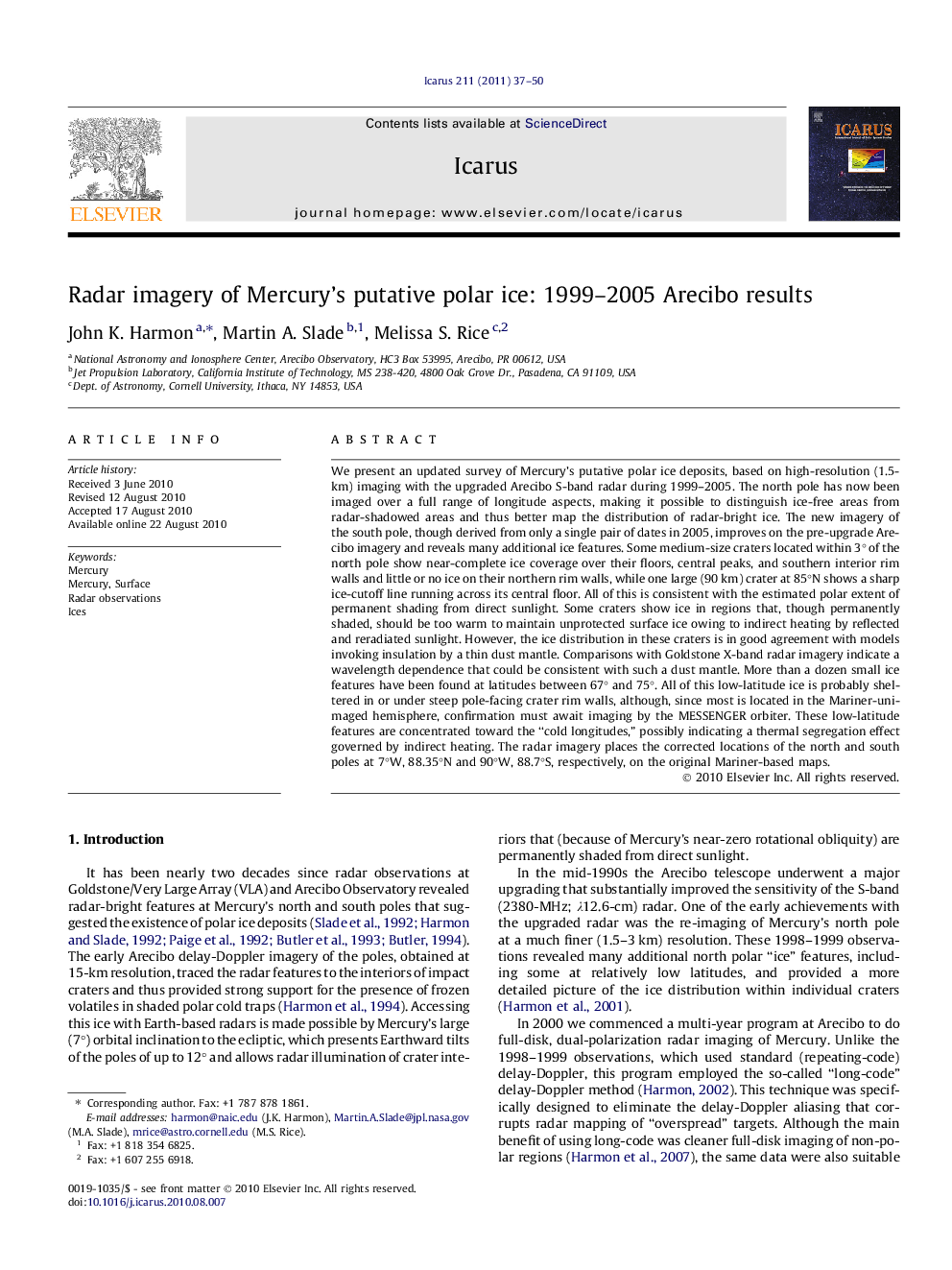| Article ID | Journal | Published Year | Pages | File Type |
|---|---|---|---|---|
| 1773757 | Icarus | 2011 | 14 Pages |
Abstract
We present an updated survey of Mercury's putative polar ice deposits, based on high-resolution (1.5-km) imaging with the upgraded Arecibo S-band radar during 1999-2005. The north pole has now been imaged over a full range of longitude aspects, making it possible to distinguish ice-free areas from radar-shadowed areas and thus better map the distribution of radar-bright ice. The new imagery of the south pole, though derived from only a single pair of dates in 2005, improves on the pre-upgrade Arecibo imagery and reveals many additional ice features. Some medium-size craters located within 3° of the north pole show near-complete ice coverage over their floors, central peaks, and southern interior rim walls and little or no ice on their northern rim walls, while one large (90 km) crater at 85°N shows a sharp ice-cutoff line running across its central floor. All of this is consistent with the estimated polar extent of permanent shading from direct sunlight. Some craters show ice in regions that, though permanently shaded, should be too warm to maintain unprotected surface ice owing to indirect heating by reflected and reradiated sunlight. However, the ice distribution in these craters is in good agreement with models invoking insulation by a thin dust mantle. Comparisons with Goldstone X-band radar imagery indicate a wavelength dependence that could be consistent with such a dust mantle. More than a dozen small ice features have been found at latitudes between 67° and 75°. All of this low-latitude ice is probably sheltered in or under steep pole-facing crater rim walls, although, since most is located in the Mariner-unimaged hemisphere, confirmation must await imaging by the MESSENGER orbiter. These low-latitude features are concentrated toward the “cold longitudes,” possibly indicating a thermal segregation effect governed by indirect heating. The radar imagery places the corrected locations of the north and south poles at 7°W, 88.35°N and 90°W, 88.7°S, respectively, on the original Mariner-based maps.
Related Topics
Physical Sciences and Engineering
Earth and Planetary Sciences
Space and Planetary Science
Authors
John K. Harmon, Martin A. Slade, Melissa S. Rice,
